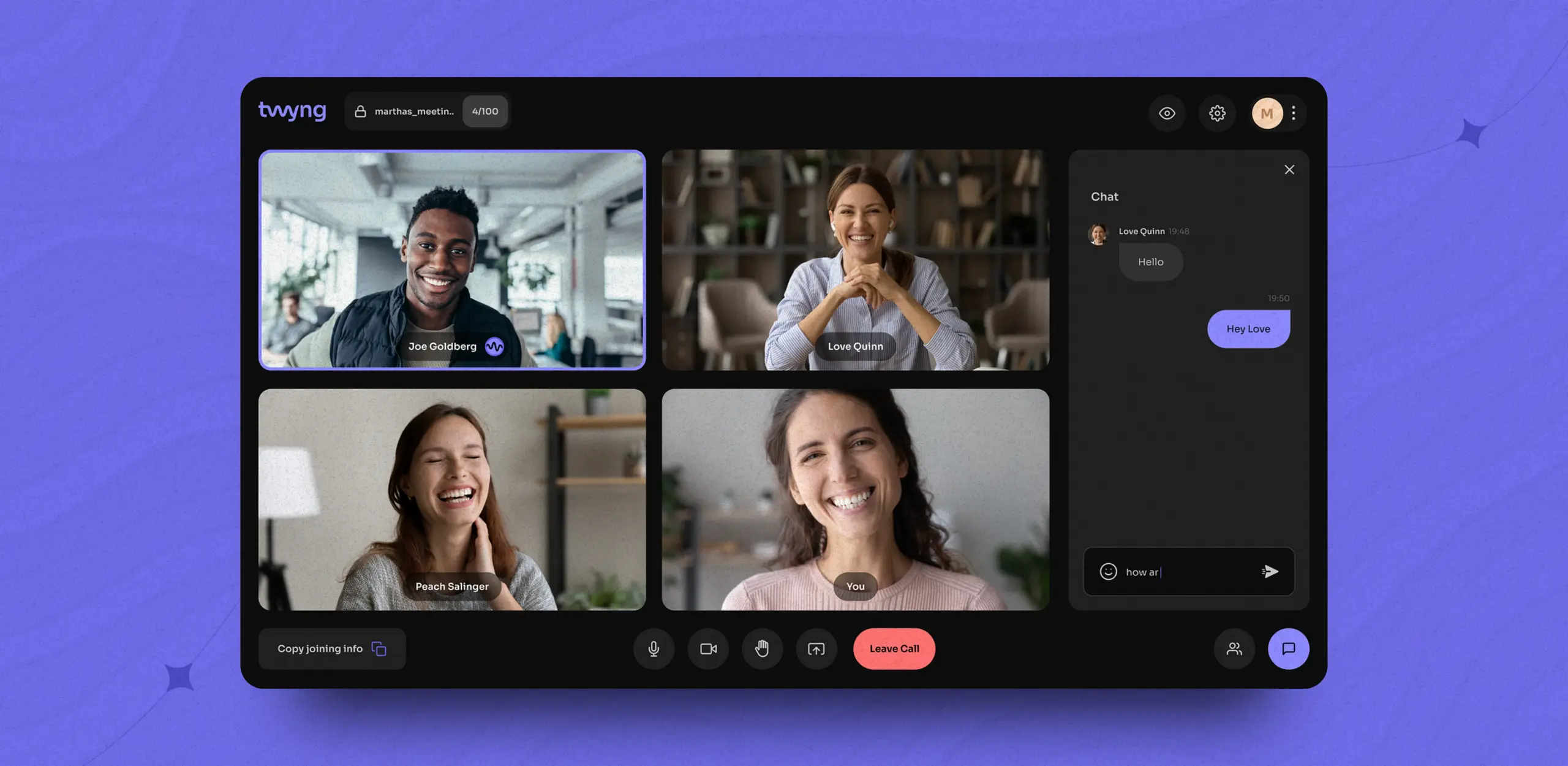Video streaming application development has become a driving force behind the transformation of the entertainment industry in recent years. As technological advancements continue to evolve and consumer habits shift, traditional TV schedules and cinema screenings are being replaced by the convenience of on-demand streaming. These video streaming applications offer users instant access to an extensive library of movies, series, live broadcasts, and user-generated content, redefining the way we consume media.
As the industry adapts to this digital evolution, video streaming apps are not just changing how we watch content—they are revolutionizing the entire entertainment landscape, reshaping audience engagement and setting new standards for content accessibility.
The Rise of Video Streaming Applications
The rapid rise of video streaming applications is one of the most significant phenomena in modern entertainment. With platforms like Netflix, Amazon Prime Video, Disney+, and Hulu leading the charge, video streaming app development has taken center stage. These platforms offer diverse content libraries, catering to a wide range of tastes and preferences, and provide viewers with the freedom to watch what they want, when they want.
Statistics reveal that the global video streaming application development market size was valued at over $50 billion in 2020 and is expected to reach approximately $220 billion by 2028, growing at a remarkable CAGR of 21%. This explosive growth is fueled by increasing internet penetration, the adoption of smart devices, and the demand for on-demand, high-quality content. As more people cut the cord on traditional cable services, video streaming application development continues to surge, driving the entertainment industry revolution.
Key Technologies Behind Video Streaming Application Development
Video streaming applications are powered by several key technologies that ensure seamless content delivery, enhance user experience, and safeguard data security. Here’s a closer look at the technologies propelling this digital revolution:
Cloud Computing
Cloud computing is the backbone of modern video streaming application development. It provides the necessary infrastructure to store vast amounts of data and deliver content to millions of users simultaneously. By utilizing cloud services, streaming platforms can scale effortlessly, manage heavy traffic loads, and offer high-definition content without compromising performance.
The cloud enables streaming platforms to deploy content delivery networks (CDNs) that distribute data across multiple servers worldwide. This not only reduces latency but also ensures that viewers enjoy a smooth, buffer-free streaming experience regardless of their location. Cloud computing also plays a pivotal role in maintaining data security, offering encryption, and safeguarding user information.
AI and Machine Learning
Artificial Intelligence (AI) and Machine Learning (ML) are revolutionizing video streaming applications by providing personalized content recommendations. AI algorithms analyze user behavior, such as viewing history, search patterns, and interaction data, to predict and suggest content that aligns with individual preferences.
For instance, Netflix’s recommendation engine is known for its accuracy, which significantly enhances user satisfaction and retention. AI also helps in content creation, automating subtitles, translations, and even creating personalized thumbnails that increase the likelihood of a user clicking on a video. As AI technology continues to advance, the future of streaming will be marked by even more personalized, interactive, and engaging experiences.
Blockchain
Blockchain technology is emerging as a game-changer in the video streaming industry, primarily by addressing issues related to security and content piracy. By utilizing blockchain, streaming platforms can establish secure and transparent transactions, ensuring that all parties involved—creators, distributors, and consumers—are accurately compensated.
Blockchain also offers smart contracts that automate royalty payments, providing a fair revenue distribution model for content creators. Moreover, it enhances content protection through encryption and decentralized data storage, making it significantly harder for unauthorized users to access or distribute copyrighted material.
5G Technology
The advent of 5G technology is set to elevate video streaming application development to new heights. With its ultra-fast speed and low latency, 5G will allow users to stream 4K and even 8K content without buffering. It will also enable the growth of augmented and virtual reality (AR/VR) experiences, offering immersive, interactive content that was previously unattainable.
For streaming platforms, 5G means faster data transmission, improved video quality, and the ability to support more simultaneous connections. As 5G networks expand globally, the entertainment industry revolution will accelerate, providing users with a more seamless, high-quality streaming experience.
How Video Streaming Application Development is Changing Entertainment?
Video streaming application development has revolutionized the way entertainment is consumed, creating a shift from traditional media to a more flexible, on-demand model. Unlike conventional television or cinema, where viewers are bound by schedules, video streaming apps offer unparalleled accessibility and convenience. These platforms empower users to watch their favorite content on various devices—smartphones, tablets, laptops, smart TVs, and even gaming consoles—from virtually anywhere with an internet connection. This anytime, anywhere access has fundamentally altered viewing habits, making entertainment a more personalized and convenient experience.
Democratization of Content Distribution
One of the most profound impacts of video streaming application development is the democratization of content distribution. In the past, getting content in front of an audience required significant resources, access to traditional media outlets, and negotiations with gatekeepers like networks and studios. Today, streaming platforms have leveled the playing field, providing independent creators, small production houses, and niche content creators the opportunity to showcase their work alongside industry giants.
Platforms like YouTube, Vimeo, and Twitch have opened the doors for creators of all kinds to reach global audiences without the need for major backing. This shift has not only diversified the content landscape but has also enabled stories that might have been overlooked by traditional media to find their audience. From independent films and web series to niche documentaries and personal vlogs, streaming platforms have given a voice to a broader range of creators, encouraging innovation and creativity.
Catering to Niche Audiences and Global Tastes
The rise of video streaming application development has also paved the way for content that caters to niche audiences and global tastes. Traditional media often caters to broad demographics, but streaming platforms can afford to be hyper-focused, providing content that appeals to specific interests, cultures, and communities. This has led to the emergence of niche streaming services dedicated to particular genres or interests, such as horror, anime, sports, or even classical cinema.
Global streaming platforms like Netflix and Amazon Prime Video have also begun to invest heavily in local content, producing and promoting shows and movies in different languages and styles to attract regional audiences. This global approach to content has not only introduced viewers to new cultures and storytelling styles but has also made international hits out of shows that would have previously been limited to their country of origin. Series like “Money Heist” from Spain, “Squid Game” from South Korea, and “Dark” from Germany have achieved global fame, illustrating how streaming apps are bridging cultural gaps and reshaping entertainment consumption on a global scale.
Enhanced Viewer Engagement through Interactivity
Another significant way that video streaming apps are changing entertainment is through enhanced interactivity and viewer engagement. Unlike traditional TV, where the audience is merely a passive recipient of content, streaming platforms have introduced features that allow for real-time interaction and feedback. Live chats, polls, interactive storytelling, and Q&A sessions during live broadcasts create a more dynamic and engaging viewing experience.
Platforms like Twitch have perfected this interactive model, allowing viewers to engage directly with content creators during live streams, fostering a sense of community and participation. Interactive elements such as choosing alternate story paths, as seen in Netflix’s “Black Mirror: Bandersnatch,” have introduced a new dimension to storytelling, blurring the line between viewer and participant.
This shift towards interactivity has also benefited creators and streaming platforms by building loyal communities around specific shows, genres, or individual creators. Viewers are not just watching—they are actively participating, providing feedback, influencing content, and even contributing financially through subscriptions, donations, or direct purchases.
Creating Communities and Social Experiences
Video streaming applications are not just about delivering content—they are creating communities and turning entertainment into a social experience. Platforms like Discord, which often integrates with streaming services, allow fans to discuss episodes, share theories, and connect with other viewers in real time. This community aspect transforms what was once a solitary activity into a shared experience, whether it’s live-tweeting during a show, joining a watch party, or participating in a fan forum.
Streaming platforms have also embraced social features that keep audiences engaged beyond just watching. For example, Netflix’s “Watch Party” feature allows friends to watch shows together, even when they are miles apart. This ability to connect socially through entertainment has been particularly impactful during times of social distancing, where virtual gatherings around shared content have become a key way for people to stay connected.
Benefits of Video Streaming Application Development for Consumers and Creators
Video streaming application development is reshaping the entertainment landscape, offering significant advantages to both consumers and content creators. These apps have democratized access to media, enhanced user experiences, and opened new revenue streams for creators. Below, we explore the specific benefits that video streaming apps bring to viewers and those behind the content.
For Consumers
Convenience and Flexibility
One of the most significant benefits of video streaming applications for consumers is the convenience and flexibility they offer. Unlike traditional TV, where viewers are bound by schedules and commercials, streaming platforms provide on-demand access to a vast array of content. Users can start, pause, rewind, or fast-forward their favorite shows and movies at their own pace, allowing them to fit entertainment into their busy lifestyles. Whether on a morning commute, during a lunch break, or relaxing at home, video streaming applications give viewers the freedom to watch what they want, when they want, on any device.
Personalization
Personalization is at the core of modern video streaming application development, driven by advanced AI and machine learning algorithms. These technologies analyze user behavior, including viewing history, search preferences, and interaction patterns, to curate personalized content recommendations. This tailored approach not only enhances the user experience by highlighting content that aligns with individual tastes but also helps users discover new shows, movies, and genres they might not have found otherwise. The result is a highly engaging, customized viewing experience that keeps audiences coming back for more.
Cost-effectiveness
Video streaming apps offer a cost-effective alternative to traditional cable and satellite TV subscriptions. With flexible pricing models, including monthly or yearly subscriptions, pay-per-view, and ad-supported options, consumers can access a vast library of content at a fraction of the cost of conventional services. This affordability, combined with the sheer volume and variety of available content, makes streaming platforms an attractive choice for budget-conscious viewers. Many platforms also offer family or multi-user plans, further enhancing value by allowing multiple users to share one account.
For Creators
Direct Audience Access
Video streaming applications empower content creators by providing a direct line to their audiences, eliminating the need for traditional distribution channels such as TV networks or film studios. This direct access enables creators to publish their work on their terms, maintain creative control, and build a loyal fan base without interference from intermediaries. Independent filmmakers, vloggers, and niche content creators have particularly benefited from this model, as they can reach global audiences that were previously out of reach.
Data-Driven Insights
Streaming platforms provide creators with valuable data analytics that offer insights into audience behavior and preferences. These metrics include viewer demographics, engagement rates, content performance, and viewing patterns. By analyzing this data, creators can better understand what resonates with their audience, refine their content strategies, and make data-driven decisions to improve future projects. This feedback loop allows creators to adapt quickly to changing viewer preferences and stay relevant in a competitive market.
Monetization Opportunities
Video streaming applications open up diverse monetization opportunities for content creators, allowing them to earn revenue through various models. Subscription fees, advertising revenue, and pay-per-view options enable creators to generate income based on the popularity and reach of their content. Additionally, some platforms offer creators the chance to participate in affiliate marketing, sponsored content, or brand partnerships, further expanding their earning potential. This financial flexibility not only sustains independent creators but also incentivizes high-quality, innovative content production.
Get in touch with us to explore how we can help you develop a cutting-edge streaming app
Future Trends in Video Streaming Application Development
As video streaming technology continues to advance, new trends are emerging that promise to further transform how content is created, distributed, and consumed. These innovations are not just enhancing user experiences but are also reshaping the landscape of the entertainment industry, creating new opportunities for platforms and content creators alike. Here are some of the key future trends in video streaming application development that are set to shape the industry:
AR/VR Integration
Augmented Reality (AR) and Virtual Reality (VR) are revolutionizing video streaming application development by offering entirely new dimensions of immersive and interactive viewing experiences. AR overlays digital elements onto the real world, while VR creates completely virtual environments, transporting viewers into different realities.
Imagine watching a concert or a sports event in VR, where you feel as if you’re in the front row, or exploring an AR-enhanced movie where you can interact with characters and objects on screen. These technologies are not just about viewing; they are about experiencing content in a way that traditional screens cannot offer. As AR and VR hardware become more accessible and affordable, video streaming platforms are increasingly incorporating these technologies to provide richer, more engaging content. This trend is set to redefine storytelling, gaming, and live events, making viewers active participants rather than passive spectators.
Niche Streaming Services
The future of streaming is not just about mainstream platforms like Netflix and Amazon Prime Video; it’s also about the rise of niche streaming services that cater to specific audience interests. These platforms focus on targeted content areas such as horror (Shudder), documentaries (CuriosityStream), anime (Crunchyroll), and even sports or lifestyle content, creating dedicated communities around shared passions.
Niche streaming services offer a more personalized viewing experience by delivering content that aligns closely with the unique tastes of their audiences. For viewers, this means access to specialized, high-quality content that may not be available on larger platforms. For creators and niche streaming platforms, it opens up opportunities to reach dedicated fan bases, reduce competition, and explore innovative monetization models like crowdfunding, exclusive memberships, and pay-per-view options. As consumers seek more tailored and authentic viewing experiences, the growth of niche streaming services will continue to play a significant role in the future of video streaming application development.
AI-Driven Content Creation
Artificial Intelligence (AI) is already reshaping how video streaming platforms recommend content, but its impact on content creation is set to become even more profound. AI-driven content creation is expected to revolutionize various aspects of production, from generating scripts to editing videos, adding special effects, and even creating realistic virtual actors.
For instance, AI can analyze vast datasets to identify trending topics and viewer preferences, helping creators develop content that resonates with their target audience. Scriptwriting tools powered by AI can assist in drafting dialogues, plotlines, and character development, significantly speeding up the creative process. Video editing software with AI capabilities can automate tasks such as scene transitions, color correction, and sound balancing, making production more efficient and accessible.
Moreover, AI is increasingly used to personalize the viewing experience. From auto-generated subtitles and translations to customized thumbnails that appeal to individual viewers, AI enhances every aspect of content delivery. As AI technology continues to evolve, we can expect it to play a pivotal role in streamlining production workflows, reducing costs, and creating new, interactive forms of storytelling that cater to the evolving demands of modern audiences.
Steps for a Successful Video Streaming Application Development
A successful video streaming application development requires a strategic approach, combining thorough market analysis, a robust technology foundation, and a focus on user experience. Each step plays a crucial role in ensuring your app meets the needs of your audience, delivers high-quality content seamlessly, and stays competitive in a rapidly evolving market. Here’s a detailed guide on the key steps to consider when embarking on video streaming application development:
Market Research and Niche Identification
Before diving into the video streaming application development process, it’s essential to conduct comprehensive market research to understand your target audience, their preferences, and the current market landscape. Analyze competitors, identify gaps in the market, and explore potential niches that your app could fill. Whether you’re targeting mainstream entertainment, educational content, fitness, or a niche genre like indie films or documentaries, defining your audience’s needs and interests will shape your app’s content and features.
Key Actions
- Conduct surveys, focus groups, and competitor analysis.
- Identify popular genres and content types within your target demographic.
- Determine the unique value proposition that sets your app apart from competitors.
Choosing the Right Technology Stack
Selecting the appropriate technology stack is critical for the success of your video streaming application. The technology stack refers to the combination of programming languages, frameworks, and tools used to build your app. It must support scalability, high performance, and robust security to handle high traffic volumes and ensure smooth video playback.
Key Components
- Backend Development: Use reliable programming languages such as Node.js, Python, or Java for backend development to handle server-side operations efficiently.
- Frontend Development: Technologies like React, Angular, or Vue.js offer responsive and dynamic interfaces that enhance user experience.
- Streaming Protocols: Choose streaming protocols like HLS (HTTP Live Streaming) or MPEG-DASH for adaptive bitrate streaming, ensuring optimal video quality across different devices and internet speeds.
- Cloud Storage and CDNs: Leverage cloud services like AWS, Google Cloud, or Azure for scalable storage solutions and CDNs (Content Delivery Networks) for fast and reliable content delivery.
User Experience Design
A user-friendly interface is crucial to keep viewers engaged and returning to your platform. The design should be intuitive, visually appealing, and offer seamless navigation. Key elements like search functionality, personalized recommendations, and easy-to-use controls significantly enhance the overall user experience.
Key Design Elements
- Simple Navigation: Ensure easy access to content categories, search bars, and playback controls.
- Personalized Features: Incorporate AI-driven recommendations based on user behavior, watch history, and preferences.
- Responsive Design: Ensure the app functions smoothly on various devices, including smartphones, tablets, laptops, and smart TVs.
Content Delivery and Management
Efficient content delivery and management are at the heart of any successful video streaming application. CDNs play a vital role in reducing latency and ensuring high-quality video playback by distributing content across multiple servers globally. Additionally, a robust content management system (CMS) allows for seamless organization, scheduling, and updating of media files.
Key Actions
- Use CDNs like Cloudflare, Akamai, or Amazon CloudFront to deliver content quickly and reliably.
- Implement DRM (Digital Rights Management) to protect copyrighted content from unauthorized access and distribution.
- Optimize video files for different screen sizes and bandwidths to enhance streaming quality.
Testing and Quality Assurance
Testing and quality assurance (QA) are essential to identify and resolve any technical issues before the official launch of your video streaming application. Rigorous testing ensures that the app performs well under different conditions, provides a consistent user experience, and meets the highest quality standards.
Testing Areas
- Functionality Testing: Check all app features, including playback, navigation, and search functions, to ensure they work as intended.
- Performance Testing: Test the app’s speed, scalability, and ability to handle high user loads without crashing or slowing down.
- Security Testing: Identify potential vulnerabilities and ensure data encryption, secure transactions, and user privacy.
Continuous Updates and Improvements
The video streaming application development process doesn’t end with the app launch. Regular updates are necessary to keep your app relevant, introduce new features, fix bugs, and address user feedback. Continuous improvements help maintain user satisfaction, encourage engagement, and keep your app ahead of the competition.
Key Actions:
- Monitor app performance and user feedback through analytics tools.
- Roll out new features and enhancements periodically to keep the app fresh and engaging.
Conclusion
Video streaming application development is revolutionizing the entertainment industry, offering viewers unparalleled access to diverse content and providing creators with innovative ways to reach their audience. As technology continues to evolve, the future of streaming looks even more promising, with AI, blockchain, and 5G poised to further enhance the user experience.
If you’re considering entering this dynamic industry, partnering with a professional video streaming application development company can help you navigate the complexities of the process and bring your vision to life.
Contact us today to discuss how we can help you implement a cutting-edge video streaming application that meets your business needs and delights your audience. Let’s shape the future of entertainment together!
Let’s transform your business for a change that matters.
F. A. Q.
Do you have additional questions?
What is video streaming application development?
Video streaming application development involves creating apps that allow users to watch videos, movies, live streams, and other content on-demand through the internet. These apps are built using advanced technologies to deliver high-quality, seamless streaming experiences.
How does video streaming application development impact the entertainment industry?
It has revolutionized the entertainment industry by making content accessible on-demand, allowing viewers to watch what they want, when they want, from any device, and providing creators with new platforms for content distribution.
What technologies are essential for developing a video streaming application development?
Key technologies include cloud computing for scalable storage, AI and machine learning for personalized recommendations, blockchain for enhanced security, and 5G for improved streaming speed and reduced latency.
What are the benefits of video streaming apps for consumers?
Consumers enjoy convenience, personalized content, and cost-effective access to a vast library of media, all without the constraints of traditional broadcasting schedules.
How do video streaming applications benefit content creators?
Streaming apps offer creators direct access to their audiences, data-driven insights for content optimization, and multiple monetization options, such as subscriptions, ads, and pay-per-view.
What are the challenges in video streaming application development?
Key challenges include managing bandwidth and buffering, ensuring content security, navigating content licensing, and developing effective monetization strategies.
How can a video streaming application improve user experience?
By offering a user-friendly interface, easy navigation, personalized recommendations, high-quality streaming, and interactive features like live chats and social sharing options.
What steps are involved in a successful video streaming application development?
The main steps include market research, selecting the right technology stack, designing a user-centric interface, managing content delivery, rigorous testing, and continuous updates.
What are the future trends in video streaming application development?
Future trends include the integration of AR/VR for immersive viewing, niche streaming platforms, and AI-driven content creation and curation, which will further enhance user engagement.
How can I start a video streaming application development?
Start by conducting market research, defining your niche, selecting the right technologies, focusing on user experience, and partnering with an experienced video streaming application development company to guide you through the process.















